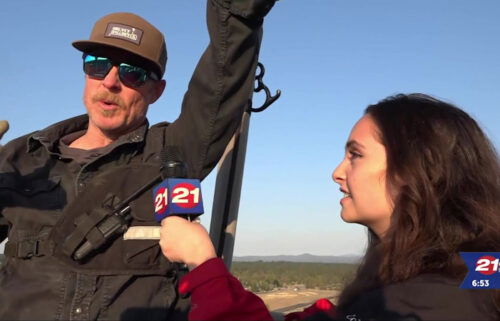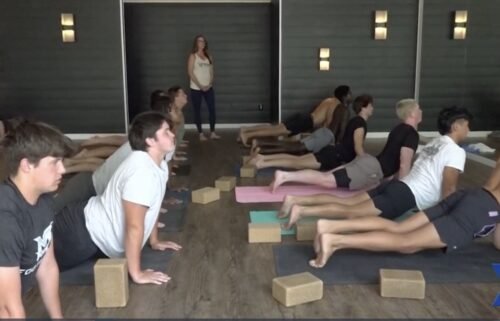ODOT wildlife underpasses work well, overpasses planned; license plate sales help fund them
Officials claim there are 85 percent fewer collisions with animals, once wildlife figures out the highway underpasses are safe. ODOT now plans to build wildlife overpasses, which are even more effective.
News release from the Oregon Wildlife Foundation:
Oregon Wildlife Foundation Warns to Watch Out for Wildlife this Holiday Season
Portland, Ore., November 14, 2022 — After two holiday seasons clouded by the pandemic, Oregonians are eager to make up for lost time. The Oregon Wildlife Foundation (OWF) has a reminder for Oregonians returning to the roads en masse this holiday season: wildlife are on the move, too.
According to the New York Times, more than 60% of Americans said they plan to travel this fall, compared with 54% last year. The probability of wildlife-vehicle collisions increases as traffic reaches pre-pandemic levels and the coinciding annual migration of deer and elk puts them on Oregon highways and roads.
“Busy roads plus Fall migration equal exponential danger – not only for wildlife, but for people too,” said Tim Greseth, Executive Director of The Oregon Wildlife Foundation. “When you’re traveling this holiday season, stay alert for animals crossing roadways to get to their lower-elevation winter homes. We all have a role to play in reducing collisions with wildlife.”
On average, more than 6,000 wildlife-vehicle collisions are reported each year, with peaks in October and November, according to the Oregon Department of Fish and Wildlife (ODFW). The actual number, however, is estimated to be at least three times higher than the reported number. Many wildlife-vehicle collisions go unreported if no serious harm or damage is done to the passenger or vehicle.
Wildlife-vehicle collision hotspots include:
- Route 82 between Elgin and Enterprise
- Highway 97 between Bend and Chemult
- Highway 20 between Santiam Junction and Sisters
- Highway 20 between Juntura and Harper
- Route 138 near Roseburg
- Highway 97 and 140 near Klamath Falls, and
- Route 42 between Myrtle Point and Coquille
Wildlife-vehicle collisions are impacting wildlife populations. For instance, mule deer numbers in Oregon have fallen 53% below state management objectives over the past few decades. Wildlife-vehicle collisions are a contributing factor, accounting for 20% of mule deer mortality in Central Oregon.
Oregon Wildlife Foundation is helping address wildlife-vehicle collisions through the sale and renewal of a specialty license plate.
With Fall migration in full swing, OWF is reminding Oregonians that they can support wildlife conservation efforts by purchasing a “Watch for Wildlife” license plate online at dmv2u.oregon.gov or at their local DMV office. In May 2022, the DMV officially released the plates to the public for purchase. To date, over six thousand Oregonians have purchased the Watch for Wildlife license plate raising, after expenses, over $160,000 for wildlife passage and habitat connectivity projects in Oregon. To learn more about and purchase the Watch for Wildlife license plate, go to https://www.oregon.gov/odot/dmv/pages/vehicle/plates.aspx
OWF is a sponsor, funder, and coalition partner for a variety of wildlife passage and movement projects across Oregon that will benefit from the Watch for Wildlife license plate. These include:
- Harborton and Pawlensky Frog Crossing Projects: Forest Park and the Linnton area — a small community on Highway 30 in NW Portland — is home to one of the largest populations of red-legged frogs in the greater Portland area. In late winter, the frogs must cross Highway 30, a frontage road, and railroad tracks to get to wetlands where they’ll make the next generation of frogs. Hundreds, if not thousands, of frogs don’t survive the crossing attempt. This reality spurred local community members to organize the Harborton Frog Shuttle project to help the frogs get to and return from their wetland breeding ponds. The proposed projects will construct dedicated undercrossings for frogs near Harborton Drive and in the Burlington Bottoms area just north of Linnton on Highway 30.
- Gilchrist Wildlife Underpass Project: Located just north of the town of Gilchrist on Highway 97 in Central Oregon, this project installed funnel fencing, deer guards, and “jump outs” to support the wildlife underpass ODOT built there in 2020. Approximately 1,000 deer and elk are struck and killed while crossing Central Oregon roads and highways during their Fall and Spring migrations each year. Wildlife passage structures reduce wildlife-vehicle collisions. The Lava Butte wildlife underpass near Sunriver on Highway 97 has produced an 85% reduction in collisions since its construction in 2011.
- Southern Oregon Wildlife Crossing Coalition: OWF is the fiscal sponsor for the Southern Oregon Wildlife Crossing Coalition, a multi-jurisdictional group working to create safe passage opportunities for wildlife along I-5 in the Cascade Siskiyou National Monument. Seeking to reduce wildlife-vehicle collisions and preserve the biodiversity that marks the Monument, the coalition is raising money to design and build two overpasses between Ashland and the California border.
ABOUT THE OREGON WILDLIFE FOUNDATION
Oregon Wildlife Foundation has been funding projects to conserve wildlife and improve access to Oregon’s outdoors since 1981. To learn more, go to www.myowf.org.



